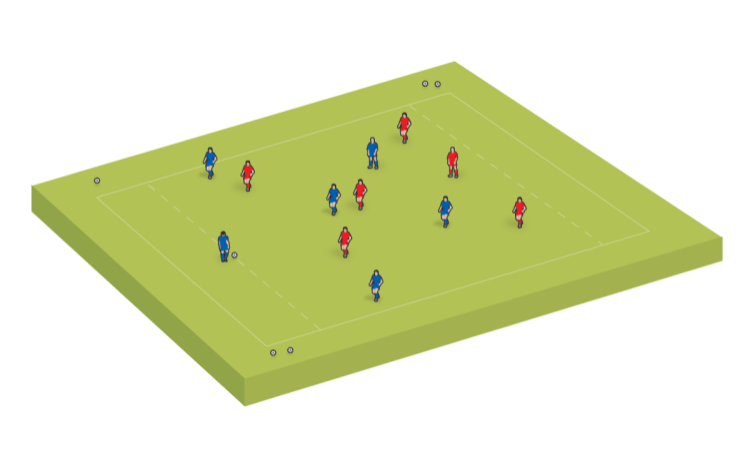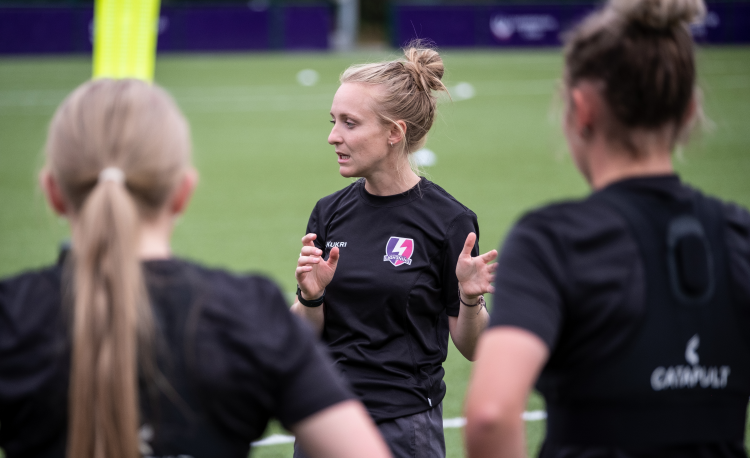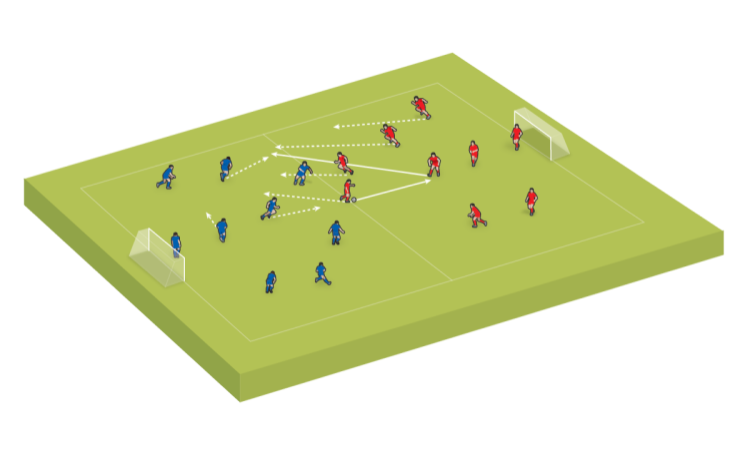The four phases of play in soccer
We explain in possession, out of possession, transition to attack and transition to defence.
IN possession/attacking
This is when your team has the ball. Having possession puts your team at an advantage, as it means the opposition can’t score and you can create goalscoring opportunities.
The key to good attacking is using the space to your advantage. It’s about making the right decision, at the right time, to help you create a breakthrough.
Some principles that teams might employ when in possession include:
- Trying to play forward whenever possible, looking to pass between the lines and penetrate the defence. If going forward isn’t an option, look to keep the ball until it is.
- Being creative and prepared to take risks, particularly in the final third of the pitch.
- Using movement, both individually and as a team, to create space – width, length and depth – to stretch the opposition’s defence.
- Supporting play by offering an option for the player on the ball.
OUT OF possession/Defending
This is when your opponents have the ball, putting them at an advantage, with a possibility of creating goalscoring opportunities.
The key to good defending is denying, delaying and restricting your opponent’s space. Defending is primarily about stopping your opponent doing things.
Some principles that teams might employ when out of possession include:
- Being compact and protecting central spaces.
- Delaying the opposition and preventing them from playing forwards.
- Pressing the opposition by putting pressure on the player on the ball and cutting off passing options.
- Providing cover by filling gaps when players press.
- Being patient and waiting for the opportunity to win the ball.
Related Files
transition to attack
This is when your opponents give the ball to you, or you win possession from them. It is sometimes also known as counter-attacking.
In this phase, the opposition team will likely be out of shape and out of position. Playing forward and attacking quickly can help to exploit this.
transition to defence
This is when your team gives the ball to your opponents, or they win possession from you. It is sometimes also known as counter-defending.
In this phase, your team will be at its most vulnerable. Individual players must recover and the team must regroup quickly, getting behind the ball and into a defensive shape and slowing the opposition’s attack down as much as possible.
As players progress, they should learn more about the phases of play, and the team and individual roles within them.
At the younger age groups, simply getting to grips with what the phases are may be enough; different tactics, approaches and strategies will start to be applied at the older age groups.
The use of language across the age groups is also important.
For example, rather than saying: "Can we penetrate the defence quickly?" to an under-8s group, you might say: "How quickly can we move up the pitch when we have the ball?’. And, rather than asking an under-6s team to "be compact", you might say "Can you protect the goal and stop the other team from scoring?".
It’s important to note that all of the phases of play involves all of the players on the pitch – the attacking phases don’t just involve attackers, nor do the defensive phases just involve defenders. Players must understand all phases regardless of their position.
Newsletter Sign Up
Coaches Testimonials

Gerald Kearney, Downtown Las Vegas Soccer Club

Paul Butler, Florida, USA

Rick Shields, Springboro, USA

Tony Green, Pierrefonds Titans, Quebec, Canada
Subscribe Today
Discover the simple way to become a more effective, more successful soccer coach
In a recent survey 89% of subscribers said Soccer Coach Weekly makes them more confident, 91% said Soccer Coach Weekly makes them a more effective coach and 93% said Soccer Coach Weekly makes them more inspired.
*includes 3 coaching manuals
Get Weekly Inspiration
All the latest techniques and approaches
Soccer Coach Weekly offers proven and easy to use soccer drills, coaching sessions, practice plans, small-sided games, warm-ups, training tips and advice.
We've been at the cutting edge of soccer coaching since we launched in 2007, creating resources for the grassroots youth coach, following best practice from around the world and insights from the professional game.







